Tuesday, 10:00am
12 April 2022
Bob Gill (1931-2021)
US designer Bob Gill was a founding father of British graphic design. Patrick Baglee pays tribute
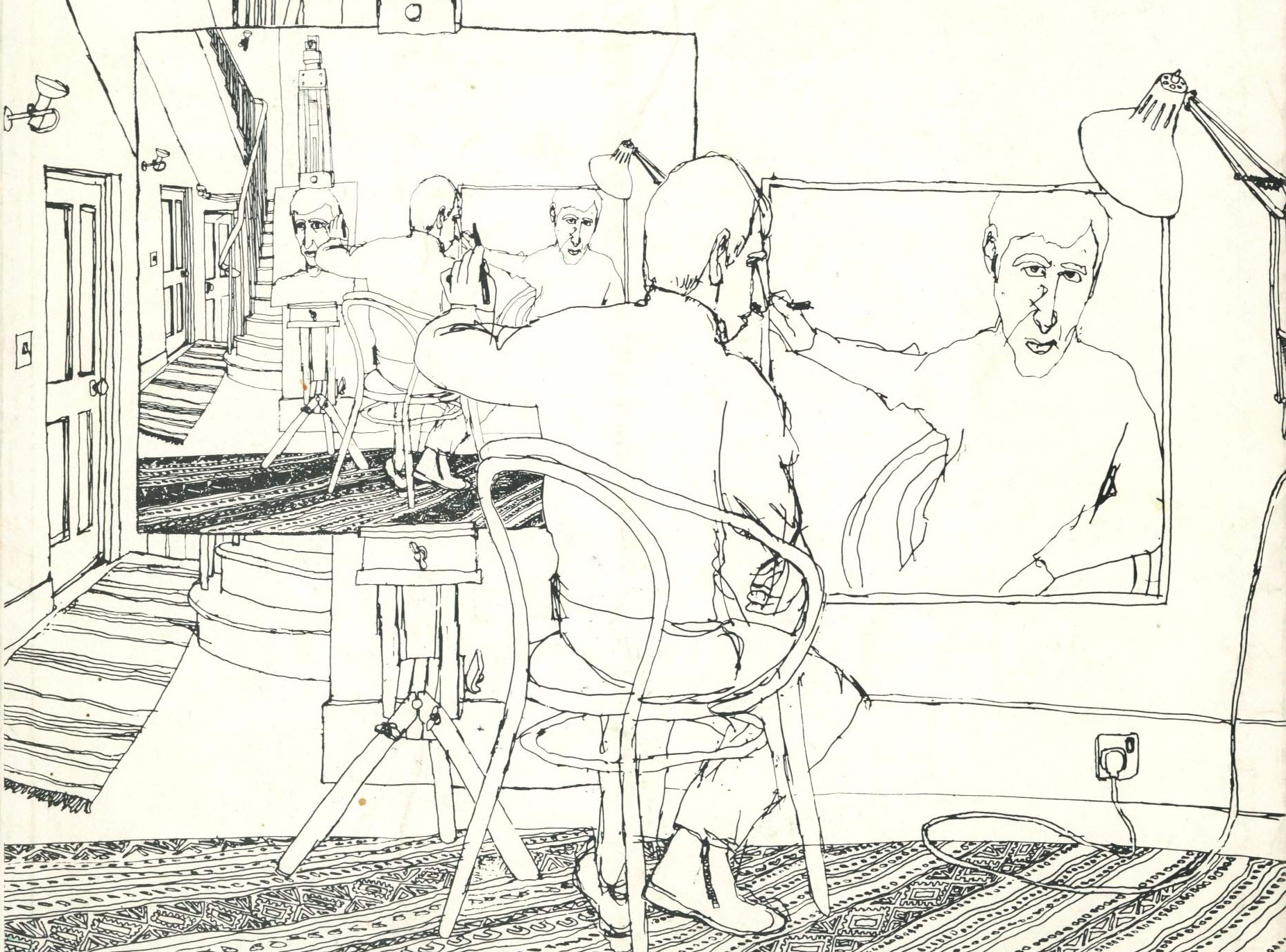
A celebrated illustrator, a respected teacher, a prolific author, and a member of one of the defining creative partnerships of the past century, Bob Gill, who has died aged 90, was a vocal advocate of the importance of original graphic solutions, determined not by the prevailing graphic style, but by the nature and context of the problem, writes Patrick Baglee.
Gill was born in Brooklyn in 1931 and raised by his mother Frieda, a single parent who earned a living as a piano teacher. Bob was her first pupil. Though he described himself as a ‘terrible jazz pianist’, he was good enough to pay his way through art school, playing at city bars and in the resort communities of the Catskill Mountains. (He once shared the bill with a fifteen-year-old Mel Brooks; Gill didn’t think Brooks had much of a future in comedy.)
Having shown an aptitude for art at school, the seventeen-year-old Gill had left home to study at the Philadelphia Museum School of Art followed by The Pennsylvania Academy of the Fine Arts before starting out as a freelance designer and illustrator. Though he had enough work to support the cost of a separate studio space, he made a small one-bedroom apartment his home-office because he always preferred to sleep where he worked.
Bob Gill pamphlet, ca. 1959. Courtesy of SVA Archives. Top. Self-portrait by Bob Gill, from the cover of ‘Bob Gill’s portfolio’, published by Lund Humphries, 1968. In the introduction to the book, Alan Fletcher and Colin Forbes describe their time with Gill as ‘the most exciting experience in our working lives.’

Poster by Bob Gill, late 1950s-early 1960s. Courtesy of SVA Archives.

He was drafted in 1952 for two years before returning to freelancing and a one-night-a-week teaching job at The School of Visual Arts (SVA) – the first step in what would be a long and committed association with design education. Though he enjoyed success in New York, an interview at the Algonquin Hotel turned a planned vacation in England into a full time appointment at a London advertising agency. Stepping off the boat on Whit Weekend 1960, Gill was given a place to stay by Alan Fletcher.
Within a short space of time, Gill became disenchanted by the work of the ‘hack’ agency that had recruited him, but he loved London, and decided to stick around. He joined forces with Fletcher and Colin Forbes and 60 years ago (on 1 April 1962) opened for business as Fletcher/Forbes/Gill (FFG). The combination of Fletcher’s typographic precision, Forbes’s business savvy and Gill’s search for bold, simple ideas – graphic design by way of Madison Avenue – was immediately successful. Life as a trio was not always plain sailing, and Gill’s sometimes brash demeanour could prove challenging. (The more pragmatic Forbes occasionally had to take a walk round the block after more ‘intense’ conversations). But it was their differences that made the combination so special. Gill once told me: ‘Any two of us would be smarter and more talented than any one of us.’
From left: Bob Gill, Alan Fletcher, Colin Forbes. Photo by Robert Freeman, London 1962.
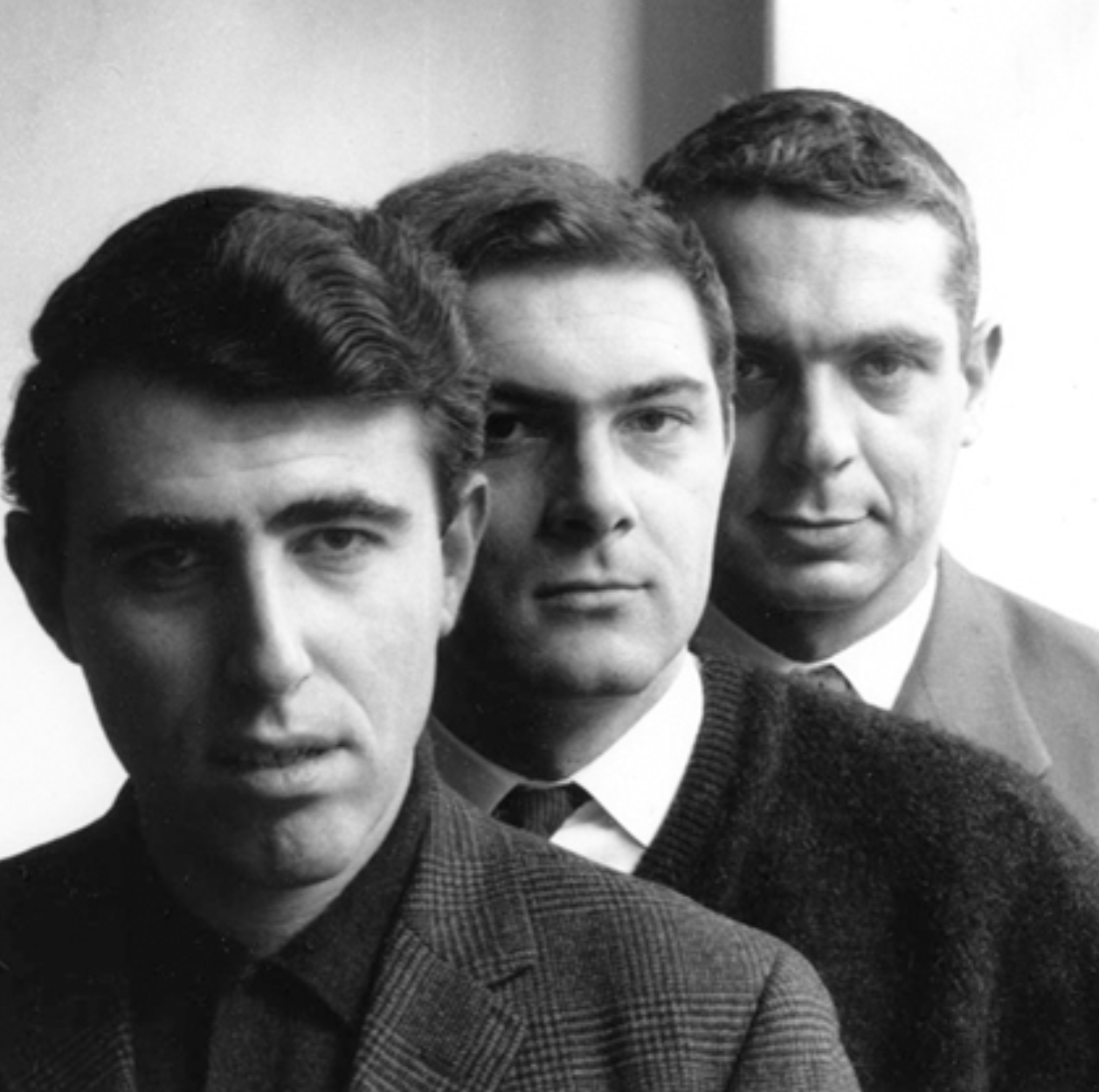
Left. Graphic design: visual comparisons by Fletcher, Forbes and Gill, Studio Vista, 1963. Right. Illustration: aspects and directions. by Gill and John Lewis, Studio Vista, 1964.
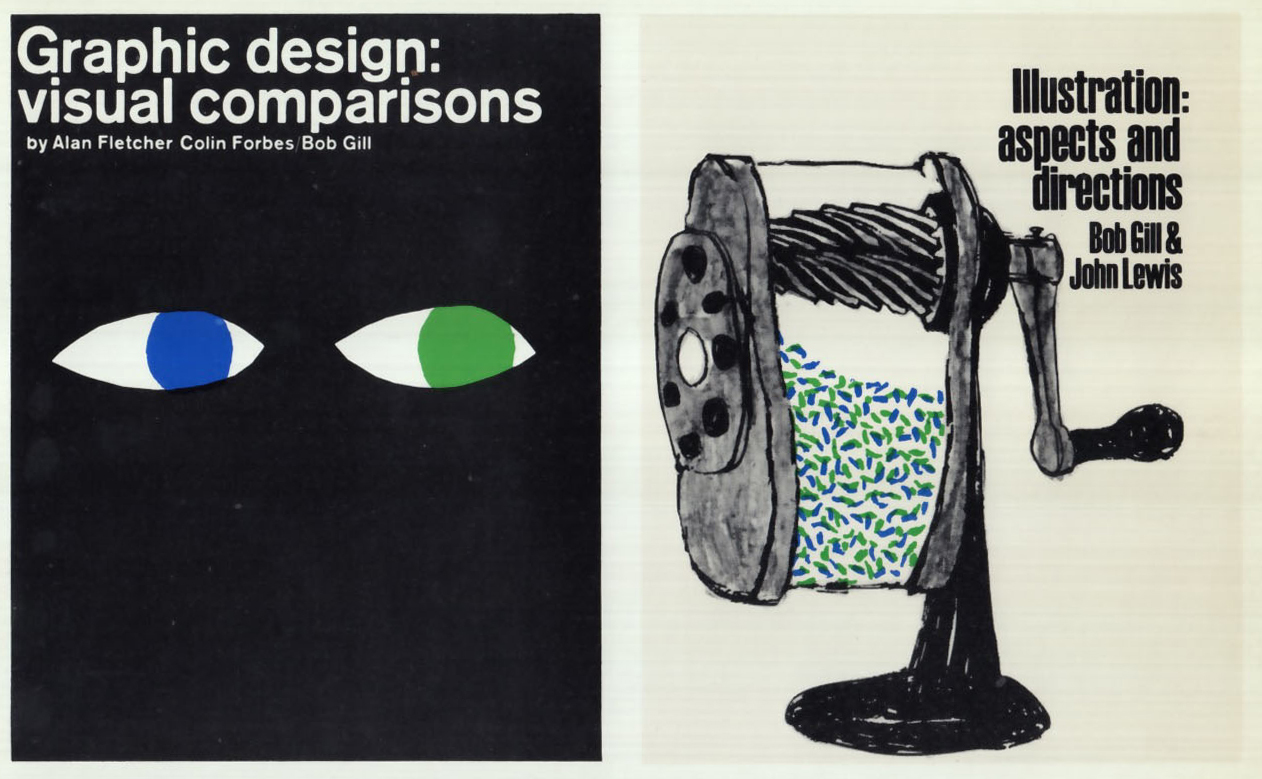
The impact Gill and his partners made on the industry can still be felt. As well as establishing the prototype design studio, they were instrumental in the founding and earliest activities of Design and Art Direction (D&AD), did much to promote British graphic design at home and overseas, and wrote Graphic design: visual comparisons, an influential visual thesis about graphic style that would sell more than 100,000 copies.
But as FFG grew and projects became more complex, Gill’s appetite waned. With no desire to be part of an ‘empire’, he left the agency that would one day become Pentagram – a decision he would later say was the biggest mistake he ever made.
In conversation with Herbert Spencer in 1968 not long after he’d resigned, Gill explained the nature of his impatience: ‘I don’t seem to be able to sustain my interest throughout a really big job. It takes too long. And also a big job requires dividing the responsibility. I’m probably too greedy for that. I’d like to do it all myself’. A one-man-show at the Stedelijk Museum followed soon after, and he stayed in London designing, illustrating, and teaching at the Royal College of Art before returning to his native New York in 1975, where, among other things, he directed a porn movie, created a multimedia musical and settled back into life as a freelancer.
Trade advertisements by Gill. Left: Planet Displays, right: Pirelli (1965).
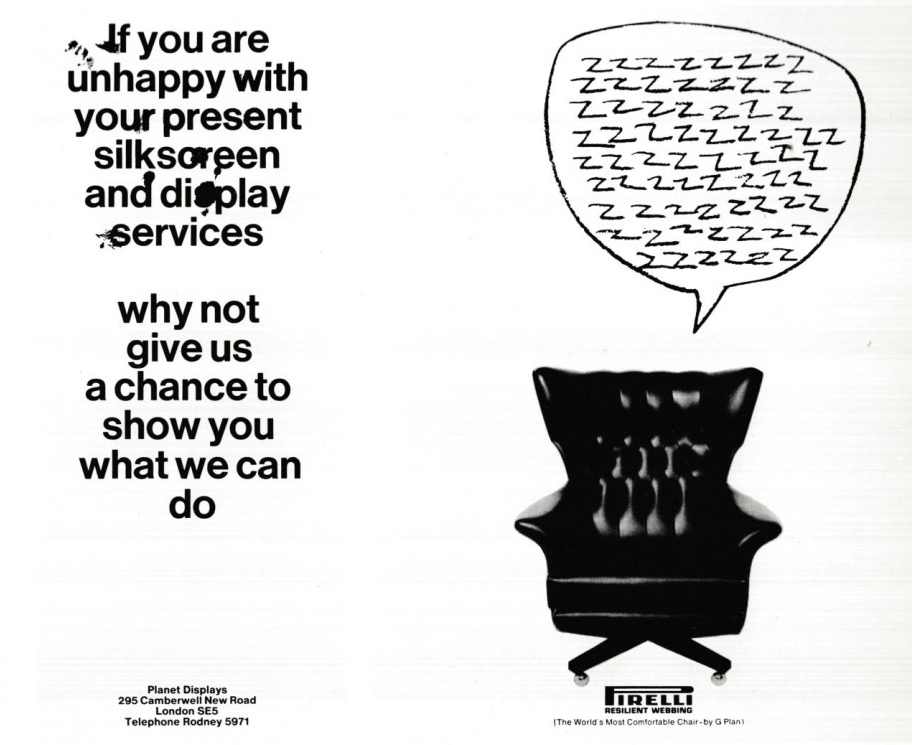
Trade advertisements for Cammell Hudson and Brownjohn Associates (1967).

Clockwise from top left: trademarks for a music festival (1965), British Goods (1964), film-makers Cammell Hudson and Brownjohn (1967) and a tour and travel agency (1965).
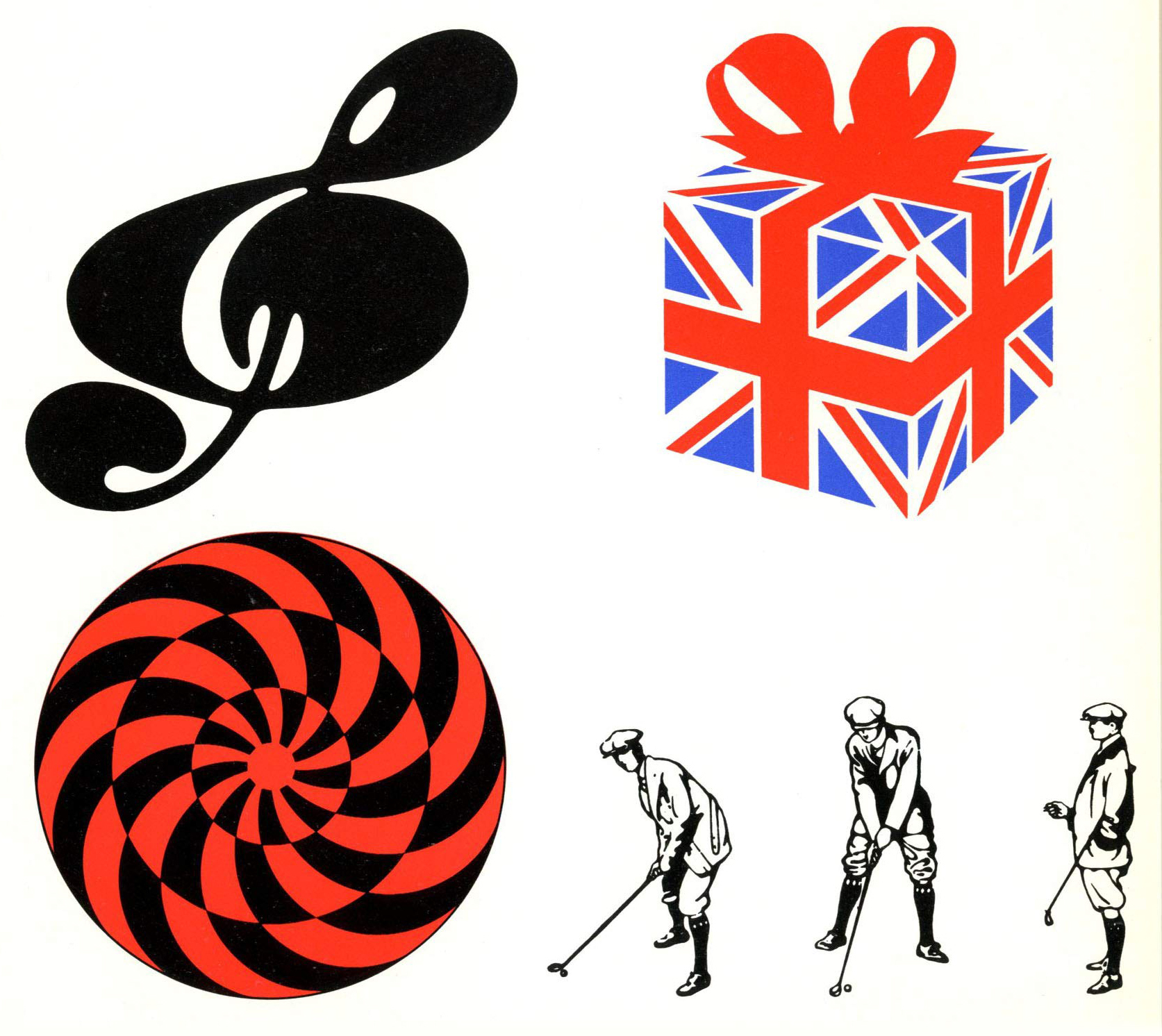
He continued to write, teach and entertain audiences at design conferences all over the world, charming and chastising in equal measure, but always staying true to his central philosophy: that delivering original and interesting solutions required a designer to be free of pre-conceptions.
In the recent past, his unwillingness to yield to stylistic whims in favour of the pursuit of interesting, truthful, and original solutions to graphic problems won him a new generation of admirers, and his many books on design stand as exemplars of this approach. Gill claimed to have written more books than he’d read.
From time to time, the industry found ways to reciprocate the energy he had given to it. He was inducted into the New York Art Directors’ Club Hall of Fame in 1991, and he received the D&AD President’s Award in 1999. Awards notwithstanding, he held the praise of his peers in particularly high regard. Robert Brownjohn, referencing Gill, called himself the ‘second-best’ designer in England, and Paul Rand told Gill that he was his favourite designer. Alan Fletcher, the man Bob Gill loved ‘like a brother’, once described his former partner as having ‘a mind like no one else I’ve ever known’.
Poster for Bob Fosse’s musical Dancin’, 1978.
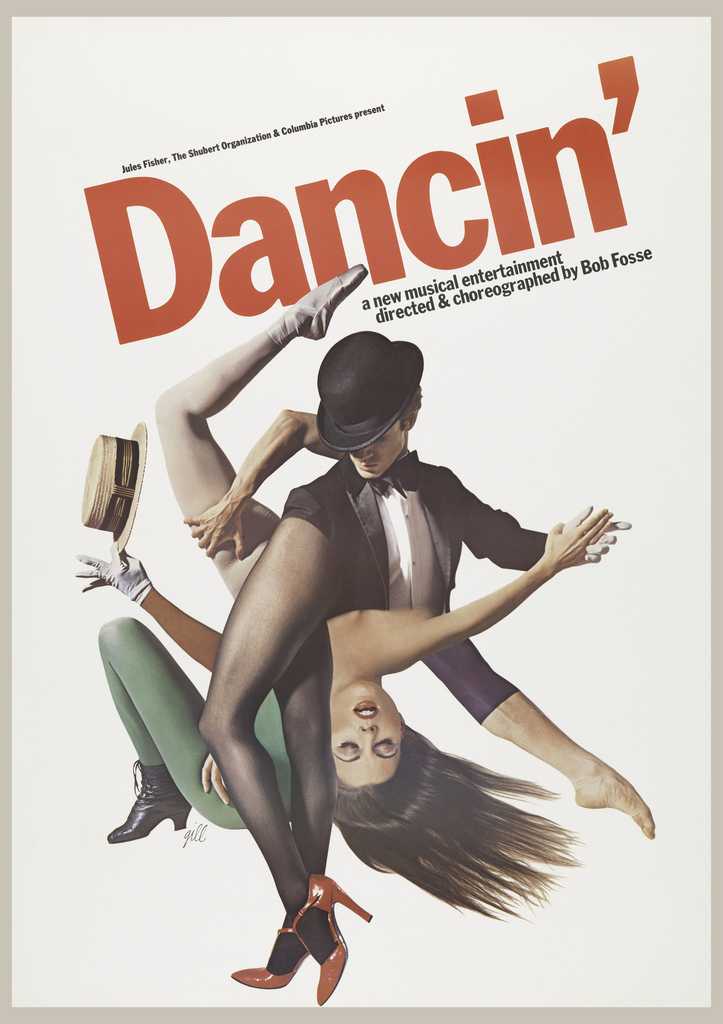
Pipe smoker, Nova Magazine, 1968.

Illustration from children’s book Supposing..., 2010.
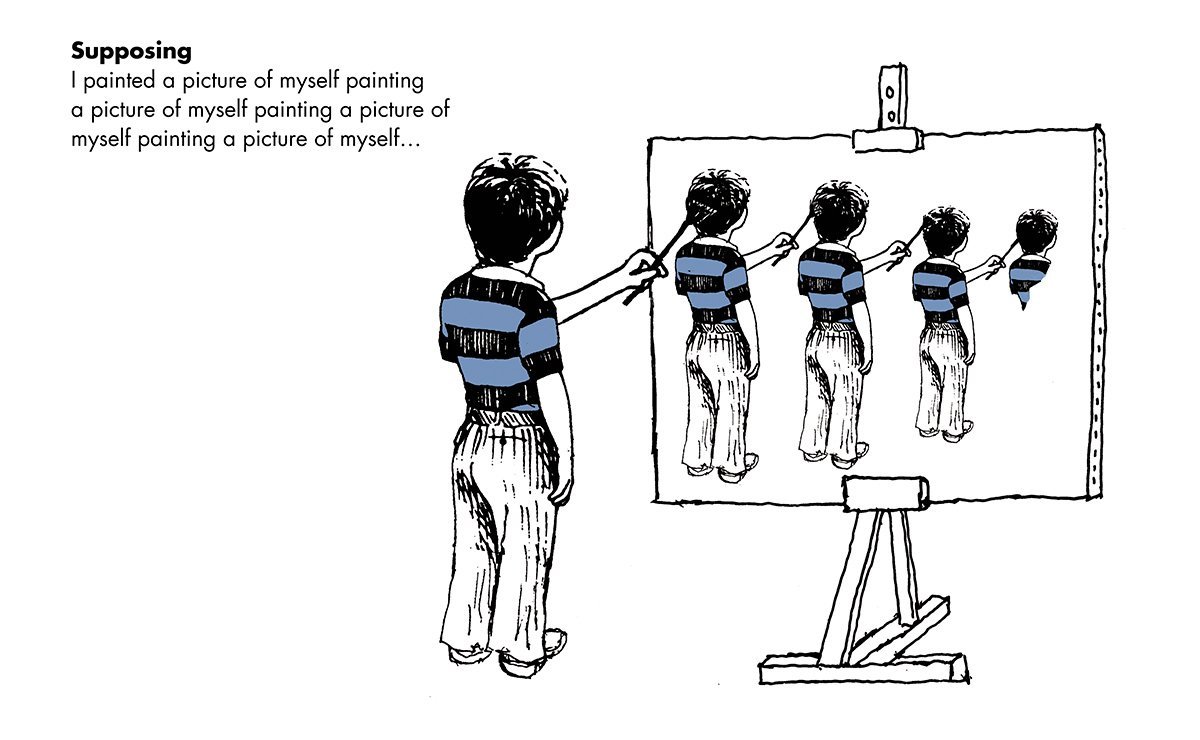
The last time I saw Bob, we chatted over coffee about his archive. He wanted to explore institutions or organisations that might be interested to take responsibility for it, making it accessible to students and professionals long after he had gone. Sadly, it was a conversation we did not get to pursue. So I didn’t get to say to him that as important as his work, books and artefacts were, he was underestimating the broader legacy he would leave, founded on the impact he had made upon all those who heard him talk about his work at a conference or in a classroom.
If, as designers, we each worked with even a proportion of the passion, determination, and belief in original thinking that this inveterate, occasionally irascible freelancer spoke about his whole life, we might find ourselves in a more interesting world.
That would be a legacy Bob would have been truly proud of.
Self portrait by Bob Gill
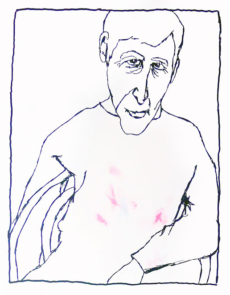
Bob Gill in his studio (June 2013), photo courtesy Patrick Baglee. Scamps for the book of collected work, Bob Gill, so far, published in 2011, can be seen over Gill’s right shoulder.
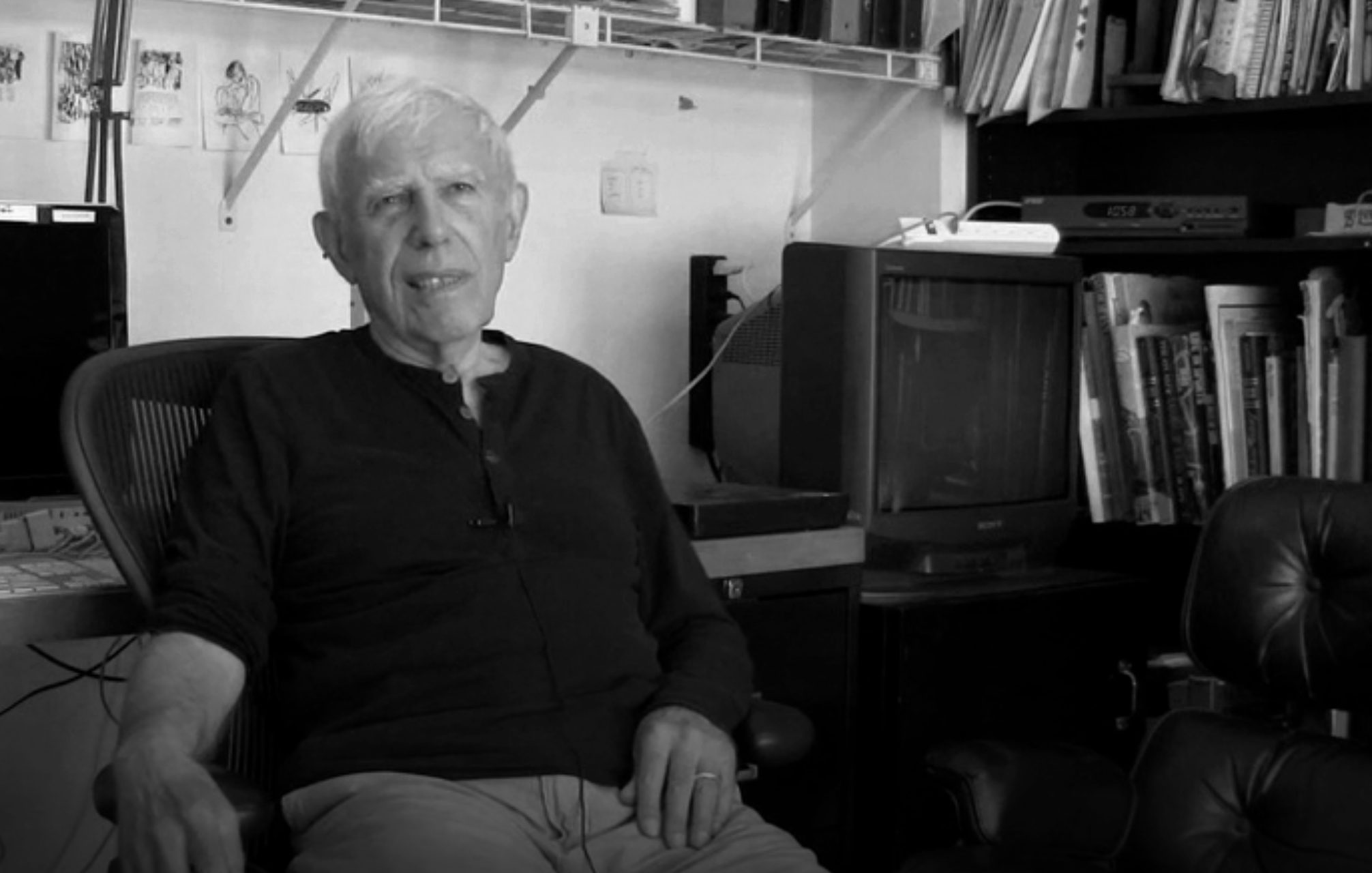
Patrick Baglee, writer, Cambridgeshire
Eye is the world’s most beautiful and collectable graphic design journal, published quarterly for professional designers, students and anyone interested in critical, informed writing about graphic design and visual culture. It is available from all good design bookshops and online at the Eye shop, where you can buy subscriptions and single issues.
